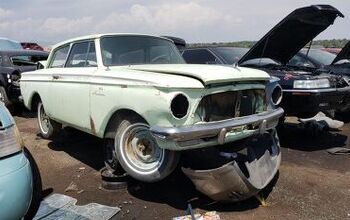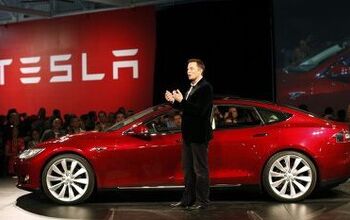Chrysler's Low Cost Car Experiment
The rise of low-cost cars has captured our attention at TTAC for more than just our love of obscure cars. With mainstream brands being hollowed out in Europe, low-cost cars are becoming the new default choice for the 99 percent, and making them profitably presents an even greater challenge. While Dacia and Datsun get a lot of attention around here, we have to give credit to Chrysler for their novel approach to the low-cost car, long before the Sandero was even a glimmer in James May’s eye.
The car’s body panels were made via injection molding with a specially-designed resign. The four pieces could be colored from the get-go, eliminating the need for a paint shop, saving hundreds of millions of dollars. The production process was similarly designed for simplicity and cost-effectiveness. Only four basic panels were needed, in addition to the doors, hood and canvas roof, all of which were anchored to a steel frame. Adhesive was used instead of hardware, save for four bolts.
The body panels were designed to be recyclable as well. A CCV required 25 percent of the parts that a comparable 1998 Neon used, and took 6 hours to build, versus 19 for a Neon. Power came from a two-cylinder air-cooled engine, designed for simplicity and ease of maintenance. While 50 mpg was expected, the engine only produced 25 horsepower and 60 mph came in an estimated 25 seconds. And all for the rock bottom price of $6,000.
Sound too good to be true? The CCV died a quiet death shortly after its public introduction, apparently the victim of Daimler’s veto. The CCV’s one saving grace may have been not making it into production; the Tata Nano, which is similar in concept, ended up flopping in its home market of India. According to Citroen enthusiast George Dyke, who wrote an article comparing the CCV with the Citroen 2CV, buyers in the Chinese market that could afford a motor vehicle wanted one with the same creature comforts as mainstream cars, as opposed to basic transportation like the CCV. This sentiment is hardly confined to China, and is doubtlessly a driving force behind the success of “premium” low-cost cars like the Dacias, which offer most of the features of a comparable Renault for significantly less money.
Of course, no Dacia has ever gone on display at the MoMA.
More by Derek Kreindler
Latest Car Reviews
Read moreLatest Product Reviews
Read moreRecent Comments
- Formula m How many Hyundai and Kia’s do not have the original engine block it left the factory with 10yrs prior?
- 1995 SC I will say that year 29 has been a little spendy on my car (Motor Mounts, Injectors and a Supercharger Service since it had to come off for the injectors, ABS Pump and the tool to cycle the valves to bleed the system, Front Calipers, rear pinion seal, transmission service with a new pan that has a drain, a gaggle of capacitors to fix the ride control module and a replacement amplifier for the stereo. Still needs an exhaust manifold gasket. The front end got serviced in year 28. On the plus side blank cassettes are increasingly easy to find so I have a solid collection of 90 minute playlists.
- MaintenanceCosts My own experiences with, well, maintenance costs:Chevy Bolt, ownership from new to 4.5 years, ~$400*Toyota Highlander Hybrid, ownership from 3.5 to 8 years, ~$2400BMW 335i Convertible, ownership from 11.5 to 13 years, ~$1200Acura Legend, ownership from 20 to 29 years, ~$11,500***Includes a new 12V battery and a set of wiper blades. In fairness, bigger bills for coolant and tire replacement are coming in year 5.**Includes replacement of all rubber parts, rebuild of entire suspension and steering system, and conversion of car to OEM 16" wheel set, among other things
- Jeff Tesla should not be allowed to call its system Full Self-Driving. Very dangerous and misleading.
- Slavuta America, the evil totalitarian police state


































Comments
Join the conversation
I remember this concept from when it debuted (1996) and this is the first time I've ever read that Daimler was involved in its cancellation. It was designed specifically for the Chinese market - hence the name CCV, 'China Concept Vehicle' - and was already being reported as DOA in 1997 (i.e. before Daimler arrived on the scene) since the Chinese authorities were pretty unimpressed at the stripped-out, austere nature of the thing.
I'd drive one of those, if it was cheap enough.